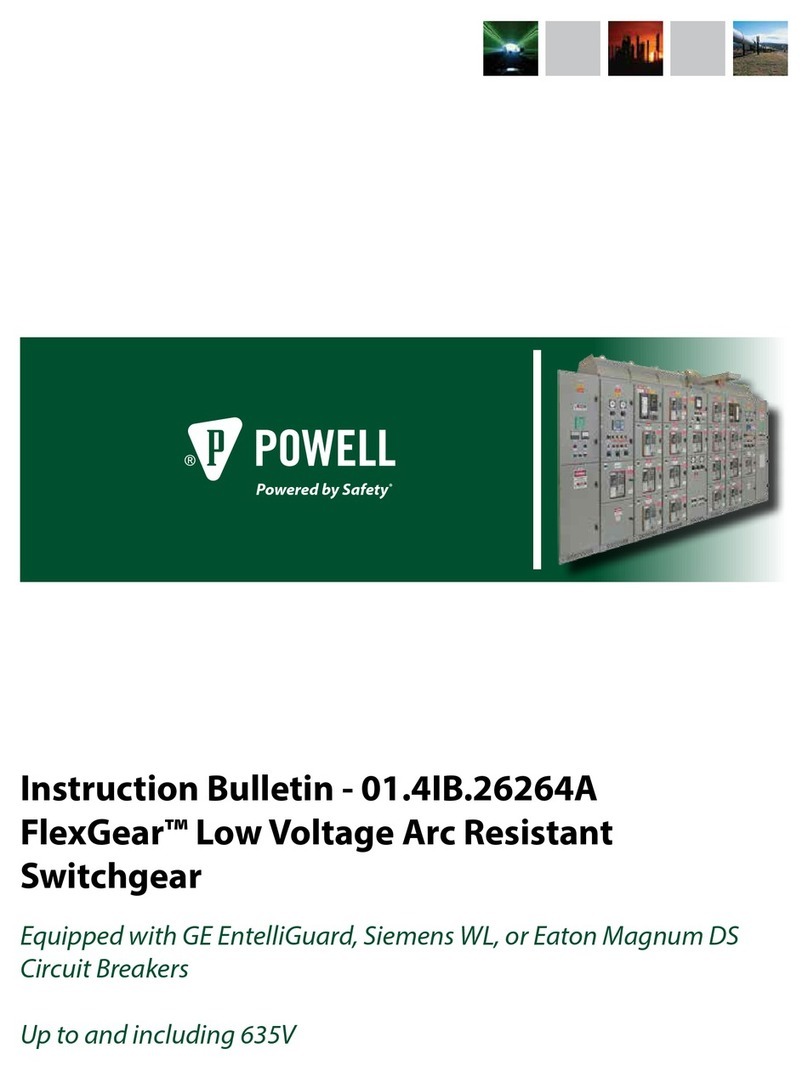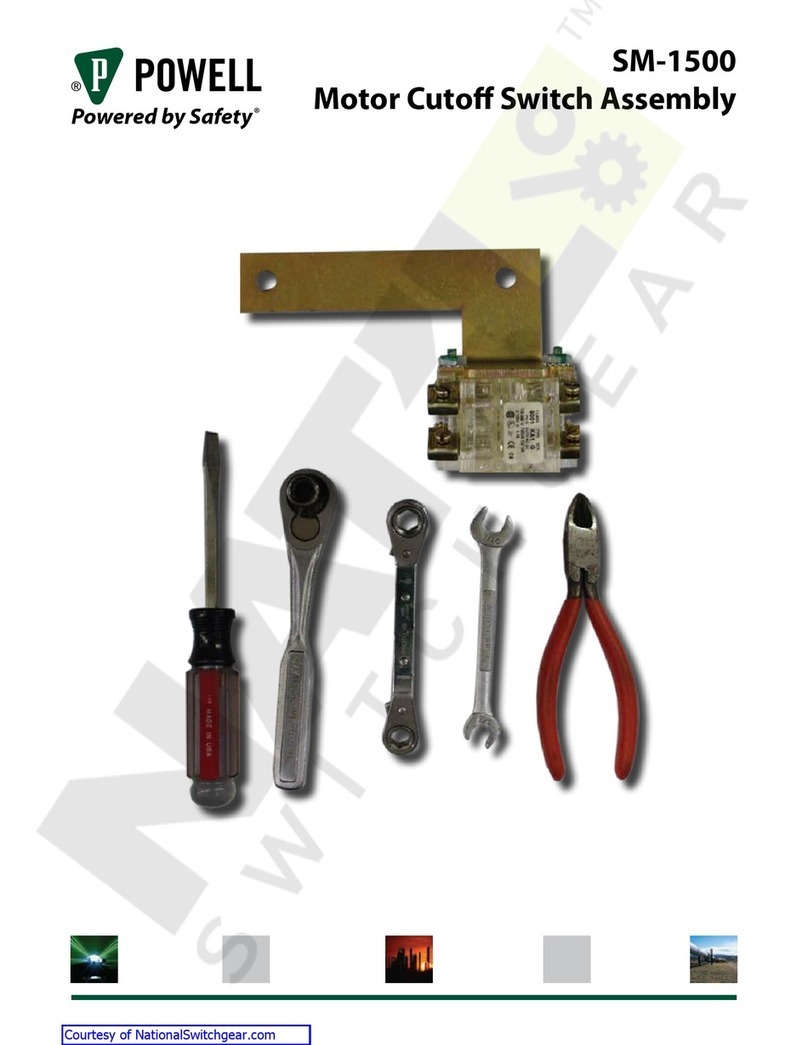
Powered by Safety®
ii
PowlVac® Electrically Operated 5kV & 15kV G&T Device
per ConEd Specication EO-2022-15 for ConEd CUSTOMER
01.4IB.50026A
Ch 4 Installation .............................................................................................................21
A. receIvInG ........................................................................................................................................................ 21
B. hAndlInG ....................................................................................................................................................... 21
c. StorAGe ......................................................................................................................................................... 21
d. electrIcAl operAtIon check ............................................................................................................................. 22
1) Test the Closing Operation of the Ground and Test Device .........................................................................................22
2) Test the Opening Operation of the Ground and Test Device ......................................................................................23
e. InSertInG Ground And teSt devIce Into SWItchGeAr eQuIpment ............................................................................ 23
1) Inserting Ground & Test Device Into Upper Compartment .........................................................................................23
2) Racking Ground & Test Device to the Connected Position ..........................................................................................23
3) Moving the Ground and Test Device from the Connected Position to the Disconnected Position ....................24
4) Removing the Ground and Test Device from the Upper Switchgear Compartment .............................................24
Ch 5 Operating Procedures ............................................................................................25
A. ApplyInG Ground ............................................................................................................................................ 25
B. removInG Ground .......................................................................................................................................... 28
c. procedure for teStInG feeder .......................................................................................................................... 29
d. teStInG portS ................................................................................................................................................. 31
e. removInG teSt proBeS ..................................................................................................................................... 31
Ch 6 Maintenance ..........................................................................................................34
A. GenerAl deScrIptIon ....................................................................................................................................... 34
1) Introduction ............................................................................................................................................................................34
2) Inspection and Cleaning ......................................................................................................................................................34
B. mechAnISm AreA ............................................................................................................................................. 35
1) Mechanical Operation .........................................................................................................................................................35
2) Lubrication .............................................................................................................................................................................35
3) Mechanism Adjustments .....................................................................................................................................................38
4) Electrical Operation ..............................................................................................................................................................39
c. GroundInG SWItch AreA .................................................................................................................................. 39
1) Routine Maintenance ...........................................................................................................................................................39
2) Moving Contact Adjustments .............................................................................................................................................39
d. hIGh potentIAl teStS ....................................................................................................................................... 40
1) High Voltage Insulation Integrity ......................................................................................................................................40
2) Control Voltage Insulation Integrity .................................................................................................................................41
































